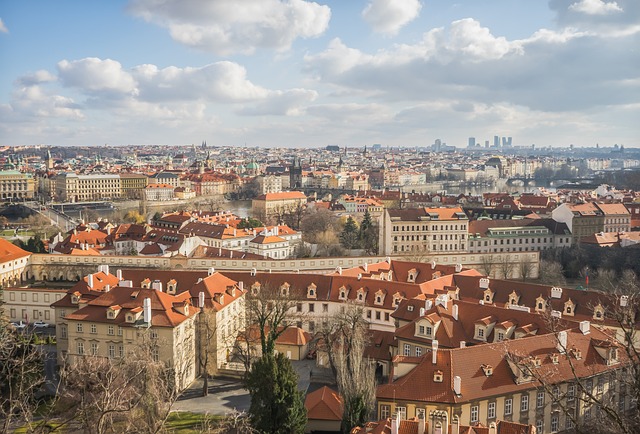Karachi, Pakistan's economic hub, suffers from severe traffic congestion due to its dense population, diverse activities, and rapid urbanization. Peak hours, demographic diversity, ports, industrial areas, residential neighborhoods, and special events all contribute to complex traffic patterns. Effective solutions are needed for urban planners and transport authorities to ease congestion, enhance safety, and improve mobility for the city's diverse population. Emerging technological solutions like smart traffic signals, mobile apps, automated parking systems, bus rapid transit (BRT) networks, and electric buses are helping transform Karachi into a more livable and traffic-efficient city.
In the heart of Pakistan, Karachi—a bustling metropolis with a complex tapestry of traffic patterns—faces significant challenges due to its heavy vehicle volume. This article delves into an in-depth analysis of traffic dynamics in Karachi, exploring how these patterns impact the city’s infrastructure and economy. We also present innovative solutions that offer a glimpse into a more efficient future for traffic management in Karachi, addressing issues critical to the city’s overall development.
- Understanding Traffic Patterns in Karachi: A Comprehensive Overview
- The Impact of Traffic on the City's Infrastructure and Economy
- Innovative Solutions for Efficient Traffic Management in Karachi
Understanding Traffic Patterns in Karachi: A Comprehensive Overview

Karachi, as Pakistan’s economic hub, boasts a complex and dynamic traffic landscape. Understanding its unique patterns is crucial for anyone navigating the city or interested in urban mobility solutions. The metropolitan area witnesses a bustling environment with a high volume of vehicles, including cars, buses, trucks, and two-wheelers, creating a vibrant yet often chaotic mix. Traffic flows vary significantly throughout the day, with peak hours presenting unique challenges. Morning and evening commutes see an influx of workers and students, leading to congestion on major thoroughfares like the M.A. Jinnah Road and Shahra-e-Faisal.
Karachi’s traffic patterns are also influenced by its diverse demographics and economic activities. The city’s ports and industrial areas experience heavy vehicle movements, while residential neighborhoods have their own distinct flow. Moreover, special events and festivals can dramatically impact traffic, with routes to and from venues becoming congested. By studying these patterns, urban planners and transport authorities can implement effective strategies to ease congestion, improve road safety, and enhance the overall mobility experience for Karachi’s diverse population.
The Impact of Traffic on the City's Infrastructure and Economy

The bustling metropolis of Karachi, Pakistan, is renowned for its vibrant energy and fast-paced lifestyle. However, a significant aspect often overlooked is the impact of traffic congestion on both the city’s infrastructure and economy. With a population exceeding 15 million, the roads of Karachi have become a maze, leading to daily commutes that stretch beyond reasonable limits. This situation has severe ramifications for the city’s overall development.
Heavy traffic not only causes immense frustration among residents but also leads to increased wear and tear of road networks, bridges, and tunnels, demanding regular maintenance and costly repairs. Moreover, it contributes to environmental degradation through higher carbon emissions, affecting air quality and public health. Economically, Karachi’s traffic congestion hampers business productivity, slows down logistics, and deters potential investors. The city’s economic growth is hindered as businesses struggle with inefficient transportation systems, leading to delayed deliveries and increased operational costs.
Innovative Solutions for Efficient Traffic Management in Karachi

Karachi, Pakistan’s economic hub, faces significant traffic challenges due to its dense population and rapid urbanisation. To tackle this, innovative solutions are emerging, leveraging technology for efficient traffic management. One such solution is the implementation of smart traffic signal systems that use real-time data to adjust light timings based on road conditions, reducing congestion during peak hours. Additionally, mobile apps provide live traffic updates, helping residents plan their routes efficiently.
Another game-changer is the utilisation of automated parking systems, which not only optimise space utilization but also streamline entry and exit, minimizing delays. The city’s transport authorities are also promoting public transportation by expanding bus rapid transit (BRT) networks and introducing electric buses, reducing private vehicle usage. These initiatives, combined with ongoing infrastructure development, are gradually transforming Karachi into a more livable and traffic-efficient metropolis.
Karachi’s traffic patterns, though complex, present an opportunity for transformative change. By understanding the city’s unique challenges through comprehensive data and analysis, we can implement innovative solutions that alleviate congestion and enhance the overall quality of life for its residents. Investing in efficient traffic management strategies is not just about improving commute times; it’s about unlocking Karachi’s economic potential, fostering sustainable growth, and creating a vibrant future for all its folks.

Leave a Reply